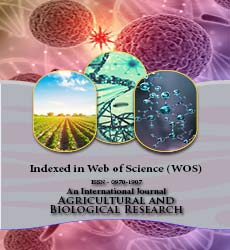Agricultural and Biological Research
RNI # 24/103/2012-R1
Djelilou O. A. Yessoufou* and Fifanou G. Vodouhe
The management of the Pendjari biosphere reserve is subject to several limits and restrictions that modify the cultural behavior of the surrounding populations. This study examines the factors determining the choice of crops in the biosphere reserve, within a regulatory context defined and applied by the designated management bodies. The data concerns a total of 600 growers and was collected using a Kobotoolbox digitized questionnaire. Descriptive statistics were used for socio-demographic characteristics, with Pearson's chi2 test for the relationship between categorical variables and study communes and Student's t-test for the relationship between categorical variables and communes. The multinomial logit regression model was used to identify the factors influencing the choice of crops (maize, soybean, sesame) in relation to the staple crop of cotton. The results show that socio economic characteristics vary according to the communes in the study. The variables: Number of farm workers, farming experience, level of education, access to credit and extension advice, membership of an organization, ethnicity of the producer, change of activity and access to land are the major determinants of the choice of crops around the reserve. This suggests that any intervention aimed at promoting sustainable agricultural diversification around the reserve should take account of socio-economic, human and land-related realities and constraints. An integrated approach that takes account of these different dimensions will be essential to support more diversified crop choices that are resilient to the regulatory challenges of the Pendjari reserve.
